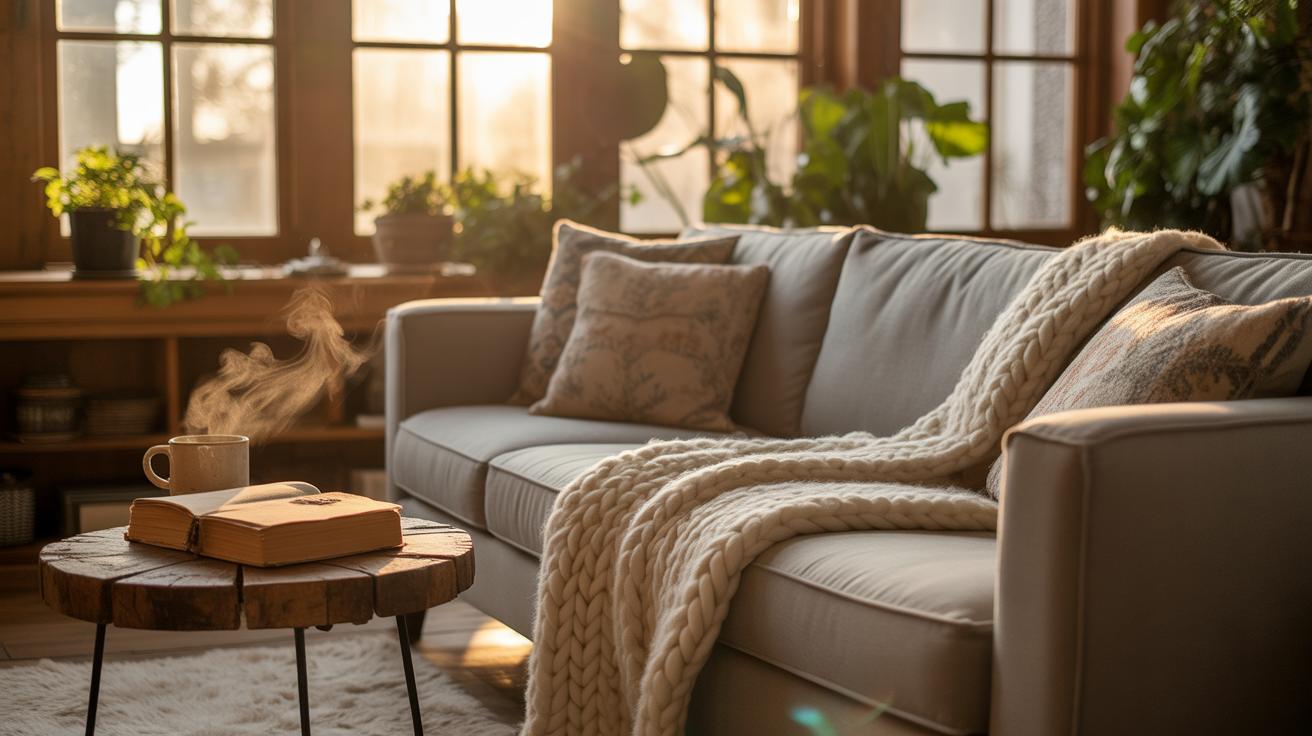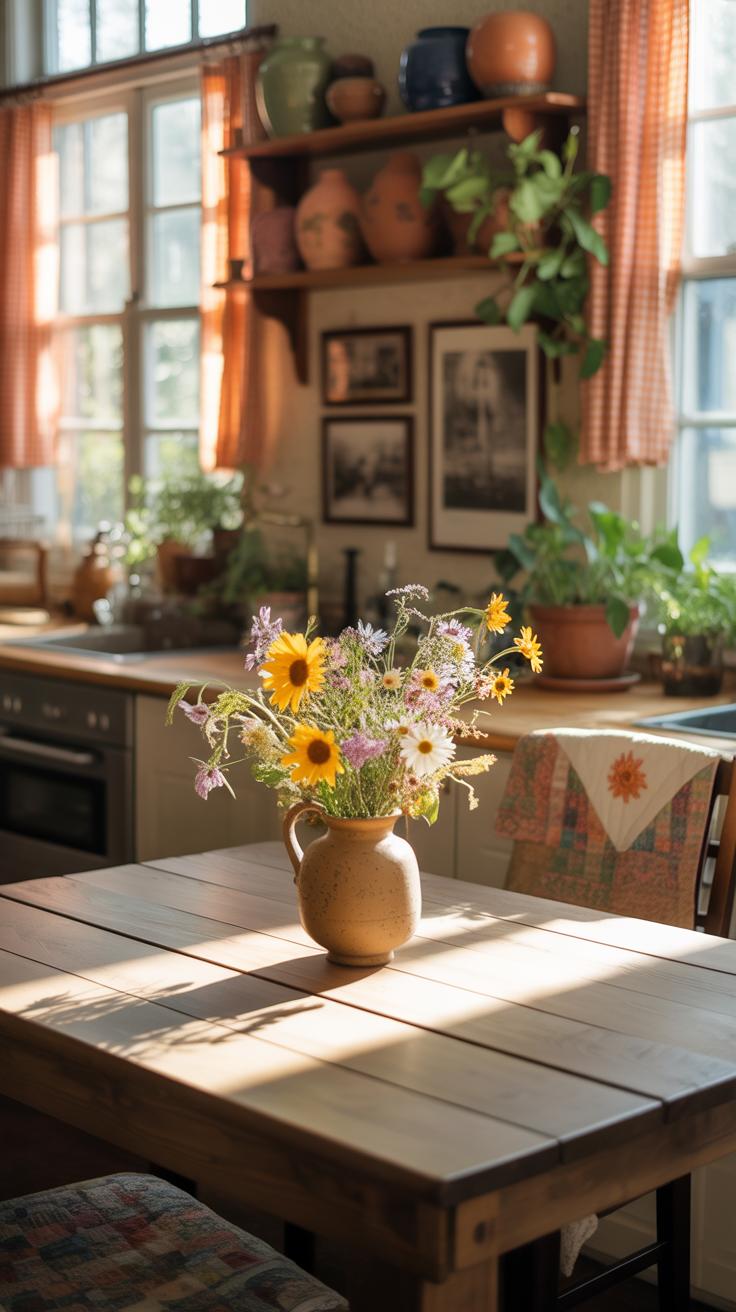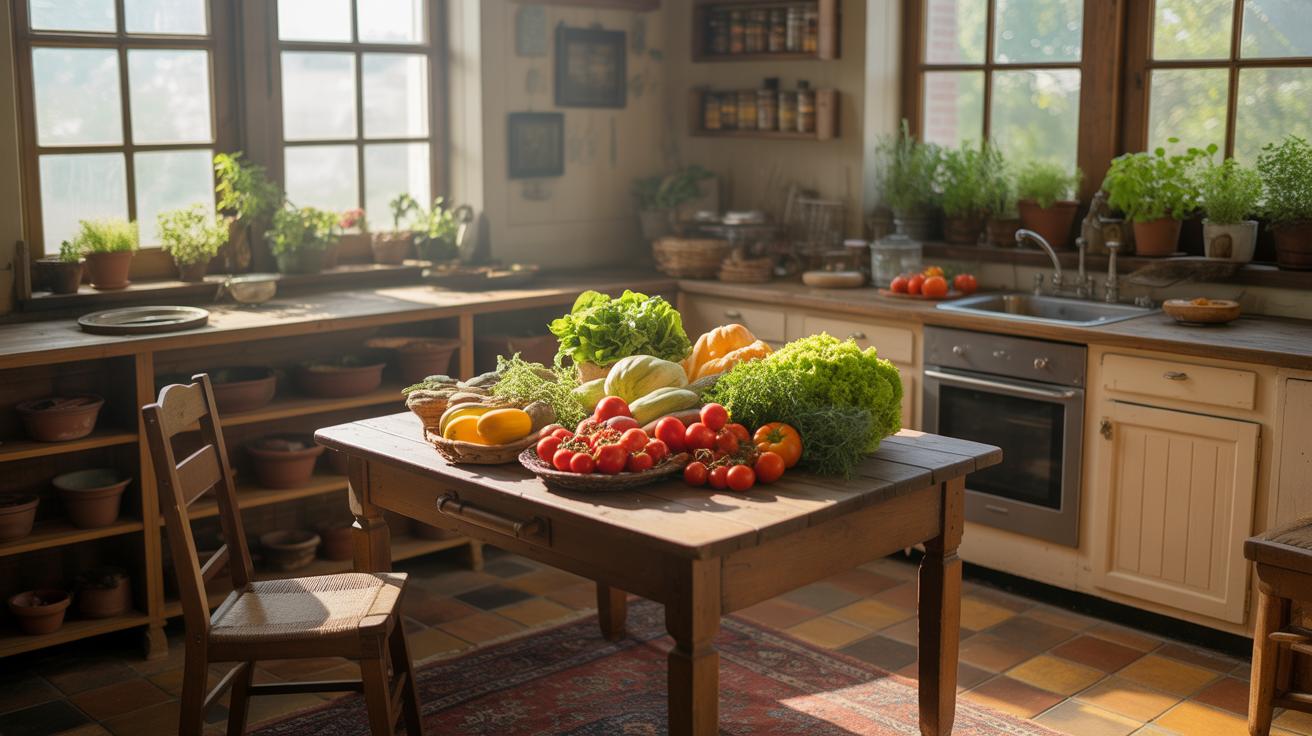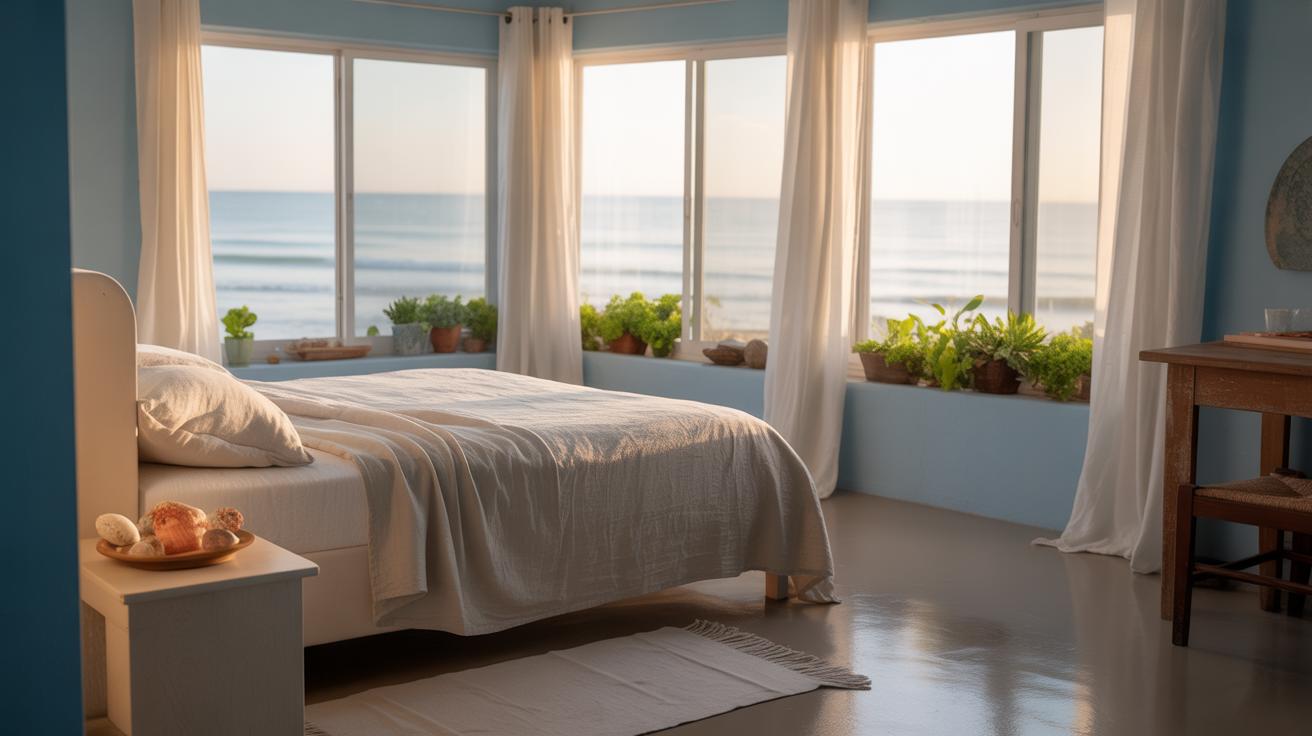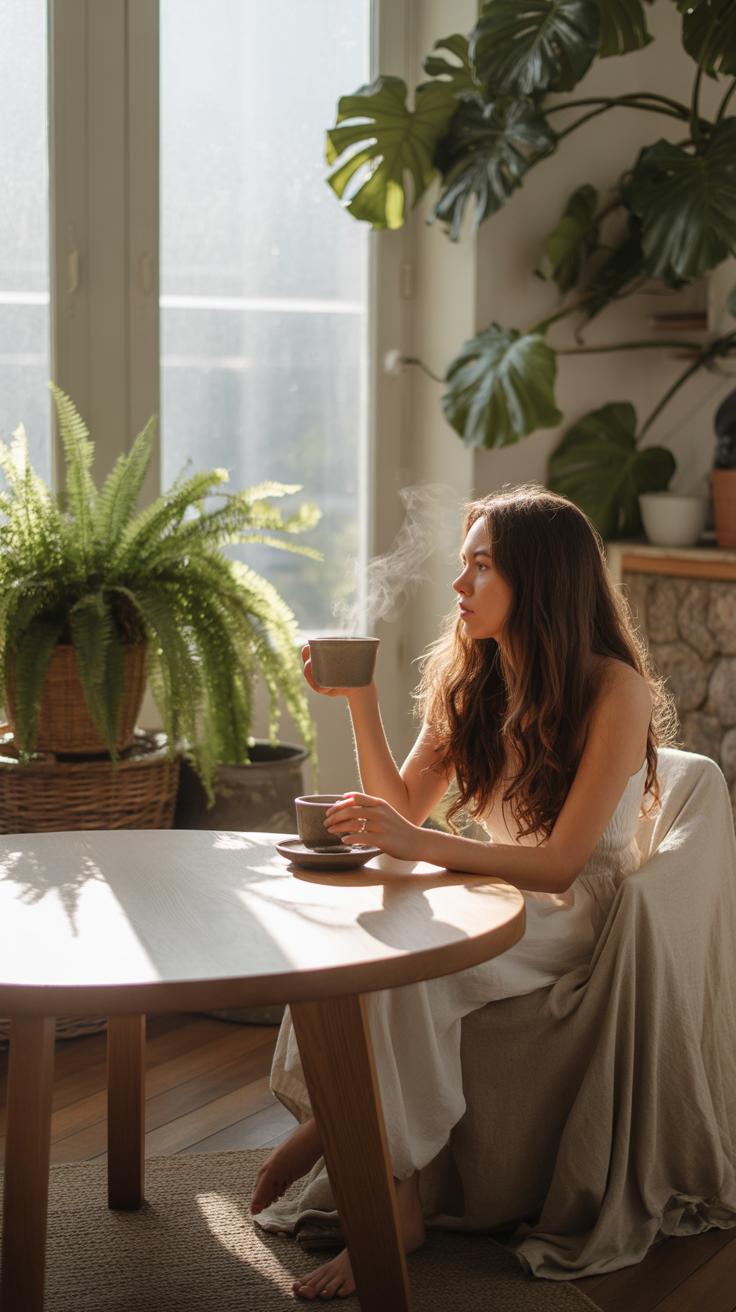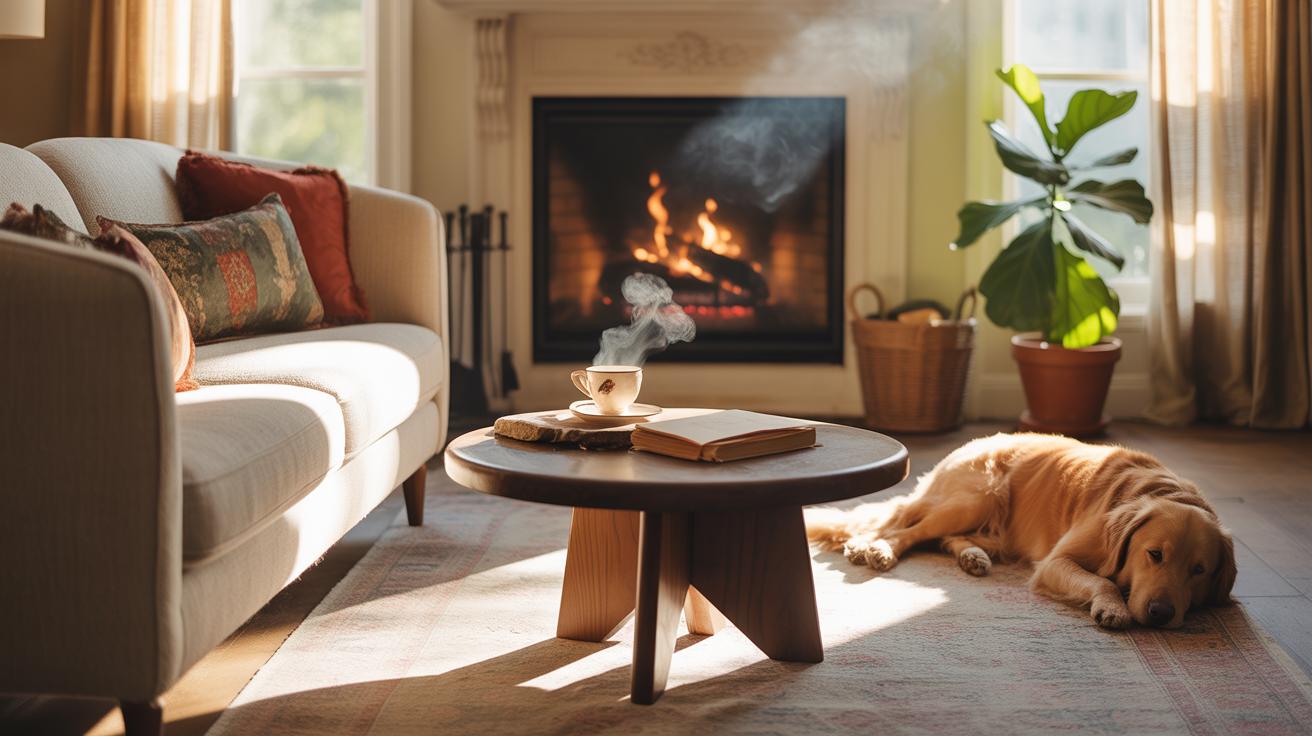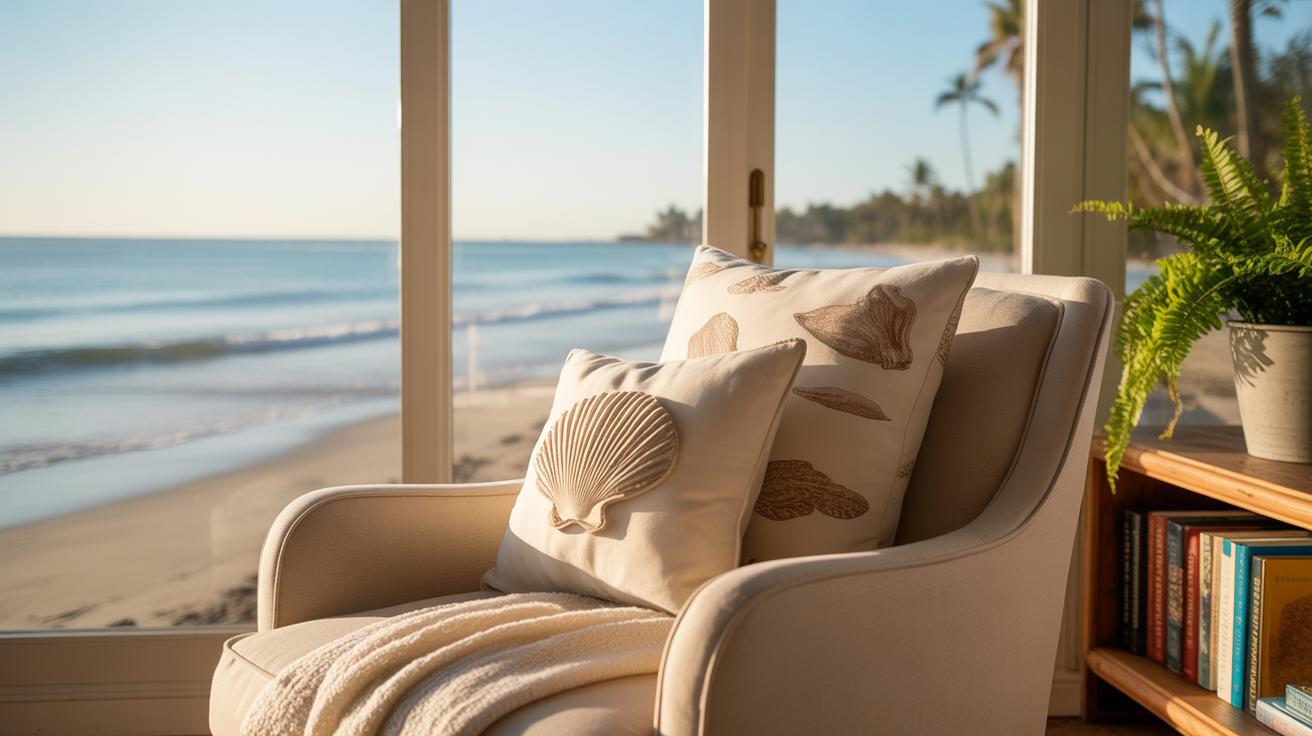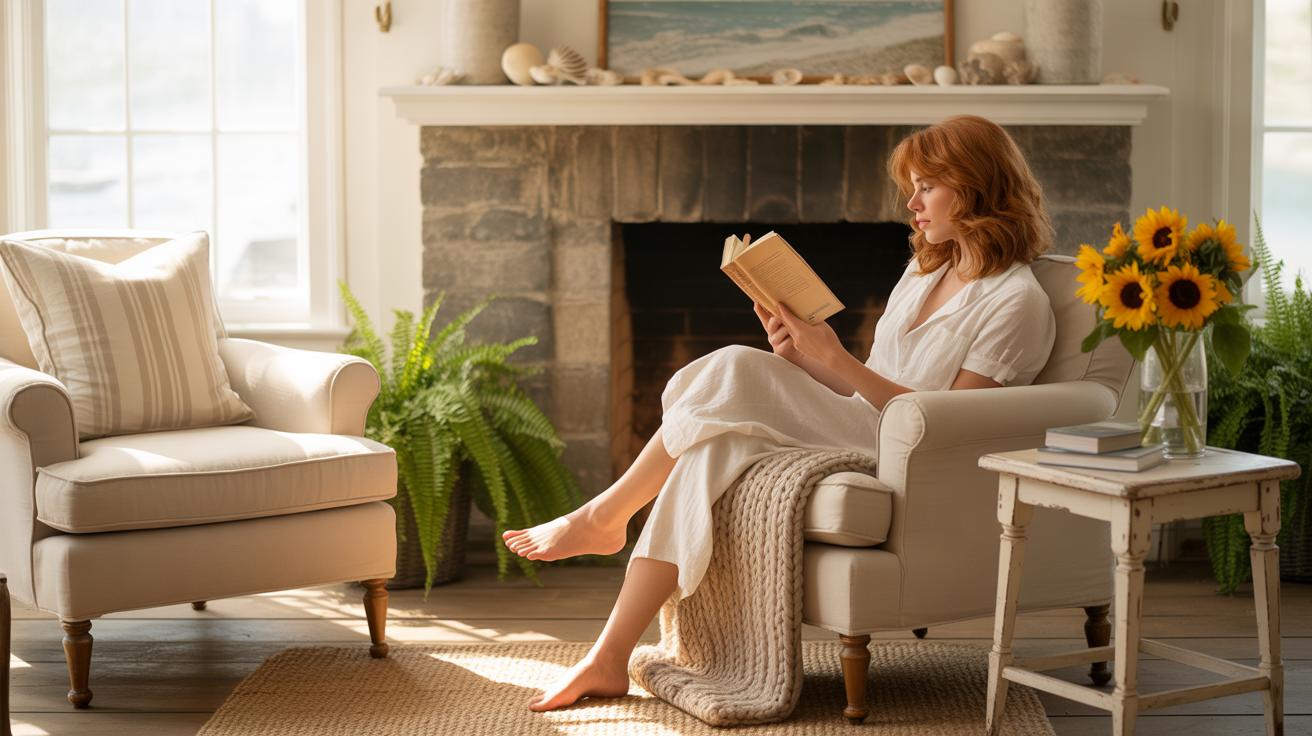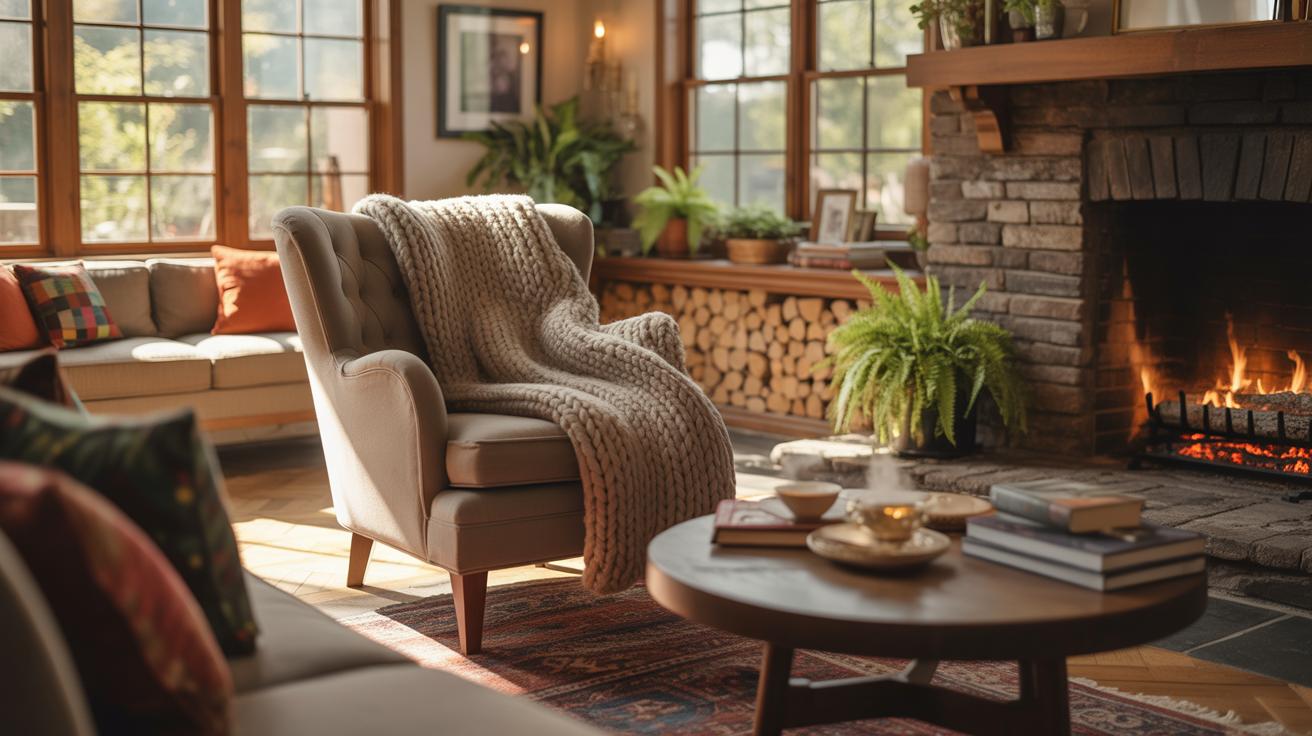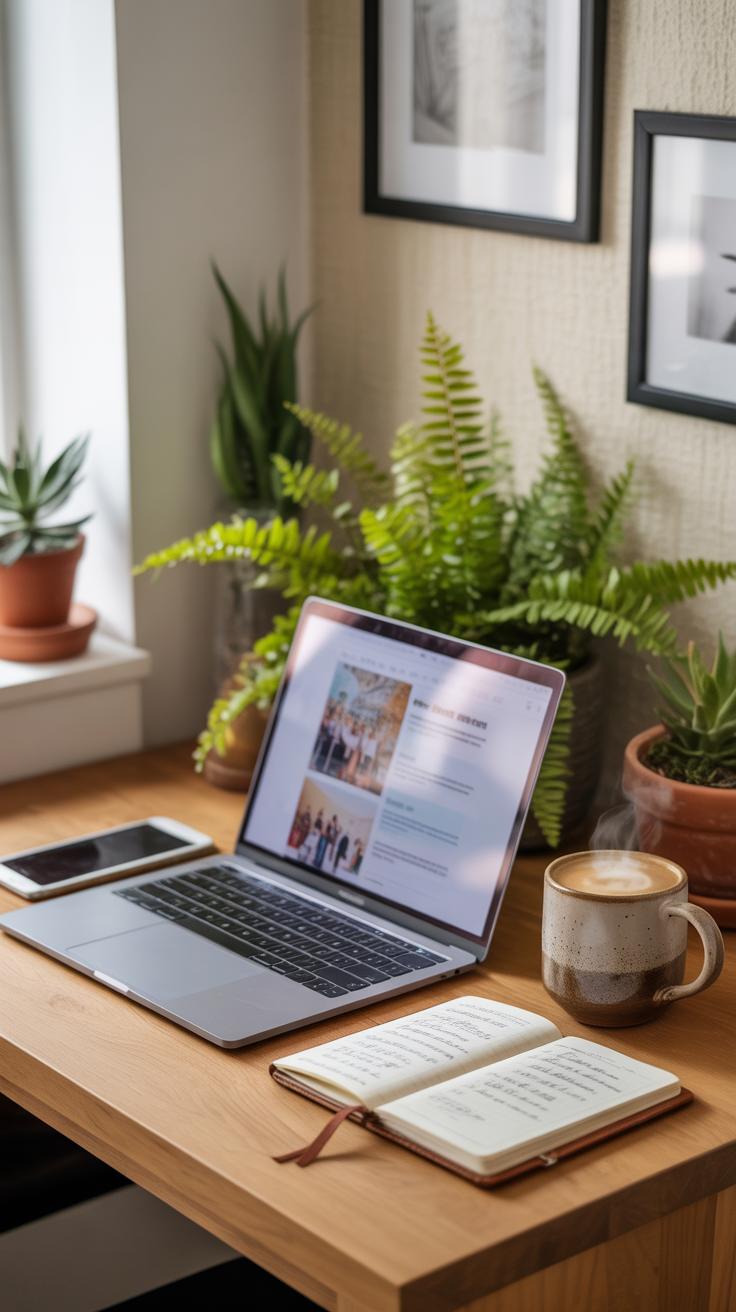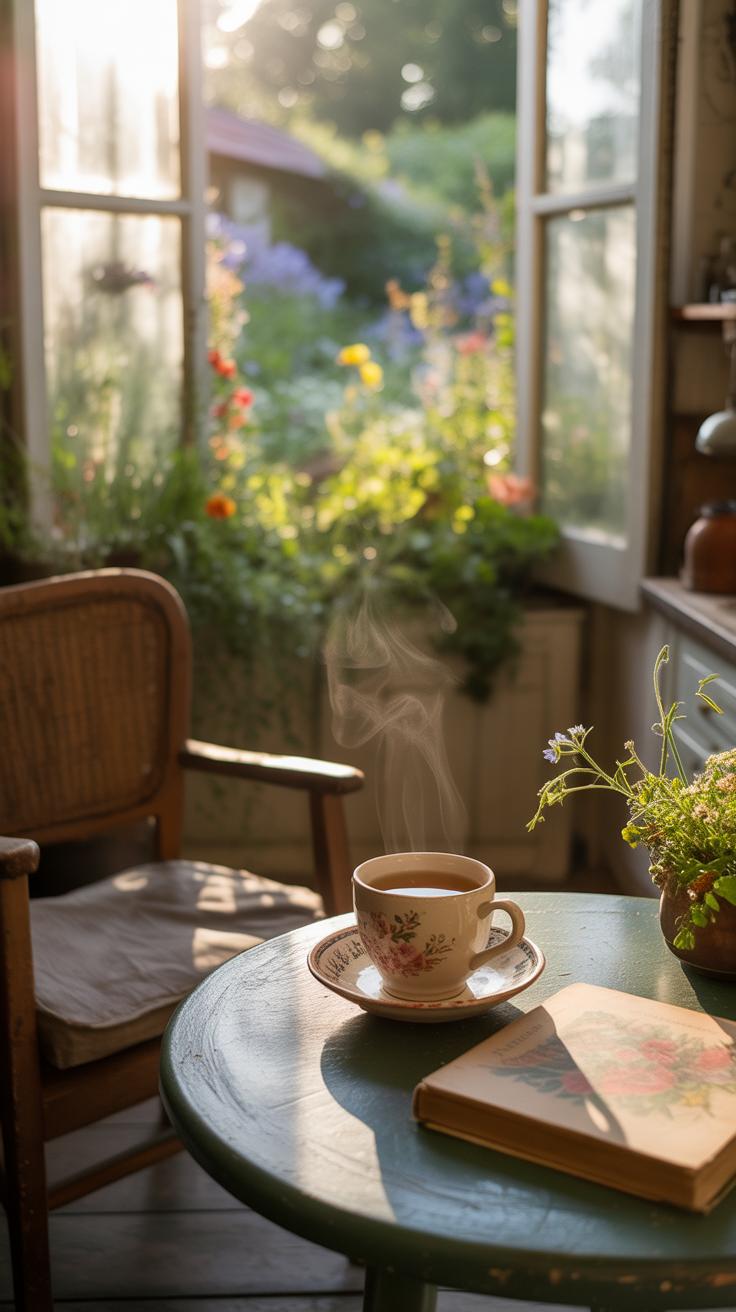Introduction
Creating comfortable and welcoming spaces in your home is important. Cottage interiors can help you design areas that feel warm and inviting. These interiors often feature simple, practical designs combined with natural materials that add texture and charm.
In this article, you will find ideas and tips to bring a cozy cottage style into your home. From choosing the right colors and lighting to selecting furniture and decor, each section will guide you to create spaces that feel relaxing and beautiful.
Understanding Cottage Style
The cottage interior style is rooted in simplicity and comfort. It traces back to English rural homes, where practical living met a welcoming atmosphere. Over time, it evolved but kept that sense of warmth and ease. It’s not about perfection or flashy design. Instead, it focuses on creating spaces that feel lived-in, friendly, and approachable.
What really defines this style is a mix of soft textures, cozy nooks, and a somewhat casual arrangement. Think about a well-worn armchair beside a crackling fireplace, or a kitchen filled with vintage finds and open shelving. These elements invite you to slow down and stay a while.
But comfort alone doesn’t capture it fully. Cottage style also involves a careful balance of natural light and gentle colors, making rooms both bright and restful. It’s quite the contrast to stiff or overly polished interiors. Maybe you’ve noticed how it’s the kind of space where you can curl up with a book without feeling the need to tidy up first.
Key Elements of Cottage Decor
Materials and colors in cottage interiors tend to be simple, natural, and a bit faded. Whites, creams, pastel blues, and soft greens often dominate the color palette—nothing too loud or overwhelming. These shades help create an airy yet intimate vibe.
Furniture usually leans towards the traditional and comfortable rather than sleek or modern. Wooden tables, distressed finishes, and upholstered chairs with slipcovers are common. Rugs often have floral or checked patterns, sometimes a little worn, which adds character.
Other decor might include pottery, woven baskets, and open shelving to show favorite dishes or old cookbooks. It’s about functionality but also charm—you might find a hand-stitched cushion or a family heirloom on display. These pieces make a house feel personalized, not staged.
Why Choose Cottage Style
Cottage interiors offer a kind of refuge from busy, hectic days. There’s something reassuring about a space that doesn’t demand attention but welcomes you quietly. This style encourages you to embrace imperfection and find beauty in the simple and familiar.
You might appreciate how adaptable it is, too. It fits both small apartments craving warmth and larger homes seeking a touch of casual elegance. Plus, you have plenty of room to mix in personal touches without clashing, which can be a relief if you struggle with more rigid decor systems.
Also, the emphasis on comfort often means furniture and layouts focus on usability, making your home practical as well as pretty. So, do you ever find yourself looking for that in your own space—that balance of ease and style? Cottage interiors might just be the answer.
Natural Materials in Interiors
Wood and stone are like the backbone of any cottage interior. You might notice thick wooden beams overhead or rough stone fireplaces that demand a second look. These elements do more than add structure; they bring an authenticity that’s tough to replicate with modern materials.
Wood floors can be worn and uneven, which, frankly, adds character. Sometimes you’ll find the wood grain isn’t perfectly smooth, but that’s part of what makes the space feel alive. Stone accents—whether on walls or around hearths—introduce a rugged, tactile element. They seem to anchor the room, making it feel stable and grounded, even as you sink into the softness around you.
Then there are the textiles: cotton, linen, wool. They give the room texture and warmth in different ways. Cotton sheets might feel crisp, yet inviting, while a wool throw brings in a touch of rustic coziness. Linen—well, it’s breathable and has this casual, slightly wrinkled look that somehow works perfectly in less formal settings. You may find yourself reaching for a cotton cushion or a wool blanket without realizing why, but it’s that subtle comfort these fabrics offer.
So, when you’re arranging your cottage space, think about mixing these materials. The varied textures and natural origins connect the room, pulling together wood’s sturdiness, stone’s rawness, and fabric’s softness. It’s a small detail maybe, but it can change how a room feels—almost like the space itself is inviting you to stay a little longer.
Color Palettes That Warm
Cottage interiors often lean on warm, muted color schemes that feel inviting without shouting for attention. These are not bold or flashy tones; rather, they seem like colors you might find on a quiet afternoon walk or a well-loved book’s pages. Think of soft creams, gentle beiges, faded sage greens, and dusty blues—shades that don’t demand your focus but quietly set a soothing backdrop.
Soft Neutrals and Pastels
Using soft neutrals creates a calm and gentle atmosphere in a cottage home. These tones give the space some breathing room and avoid visual chaos. Pastels, like pale pink or light lavender, slip in subtly, adding a whisper of color without overwhelming the senses. A pale blush wall or a soft mint on cabinetry can work wonders to lift the spirit without feeling overpowering—or too nursery-like. I’ve often found that these muted hues help in making even smaller rooms feel more open and less cluttered.
Adding Color with Decor
Adding splashes of color through accessories lets you experiment without commitment. Cushions in warm rust, mustard, or deep teal can anchor a neutral sofa without getting in the way of the overall calm. Rugs with simple patterns or artworks hung with care can introduce bursts of personality, too. These touches prevent the space from feeling flat or monotonous. If you’re uncertain, try swapping out just one cushion or a small rug to see how the mood shifts. It’s a simple, flexible way to introduce warmth that can evolve with your taste—or seasons.
Lighting for Ambiance
Natural Light Maximization
Windows in cottage interiors do more than just let light in—they bring life to the space. Try to avoid heavy drapes or overly ornate window treatments that block daylight. Sheer curtains or light linen panels work well, gently diffusing the sun without shutting it out.
Think about arranging your rooms so that seating areas or reading nooks face windows. This invites daylight to linger in the spots where you’ll spend time. If your windows are small or oddly placed, mirrors can help bounce light around, creating a brighter feel without adding lamps.
Sometimes, tilting blinds or opening windows strategically can control glare without sacrificing warmth. And maybe you’ll notice that the light shifts with the seasons, changing the room’s mood—a detail that’s easy to overlook but quite charming.
Soft Artificial Lighting
Artificial light in a cottage needs a delicate touch—too harsh, and you lose that cozy vibe almost immediately. Lamps with fabric shades are a classic choice, spilling light softly and creating inviting pockets of glow rather than bright floodlights.
Candles are another option that often gets overlooked outside holidays. There’s a certain unpredictability in their flicker that makes a space feel alive. And don’t discount candle-style bulbs or fixtures designed to replicate that softness year-round.
Small table lamps, wall sconces, and even string lights—used thoughtfully—turn a room’s atmosphere around. The goal isn’t just brightness but warmth, so think about bulbs with warm color temperatures, ideally below 3000 Kelvin. They help balance the color palettes you already chose, making everything feel a little more homey.
Furniture Choices
Picking furniture for a cottage-style interior means balancing comfort with that subtle charm cottages carry. You’ll want pieces that feel relaxed but still carry a sense of history or simplicity—think worn wooden chairs that invite you to sit down for a while or plush sofas where you can curl up with a book on a rainy afternoon.
Classic cottage furniture often includes:
- Sturdy, unpainted wooden tables and chairs
- Soft, oversized sofas in neutral or muted fabrics
- Rocking chairs, often with cushions that look a little faded
- Open shelving made of reclaimed wood
These pieces don’t just fill space. They create an atmosphere that’s both lived-in and welcoming. Comfort comes first, but that doesn’t mean the furniture should be bland.
There’s something about vintage or handmade furniture that adds real depth to a cottage room. A chipped sideboard passed down through generations or a handmade rocking chair from a local craftsperson can tell stories and hold memories. Maybe it’s your imagination, but those touches seem to make a house feel more like a home.
Sometimes, mixing a newer cozy armchair with an old wooden trunk used as a coffee table feels right — imperfect, yes, but personal. Have you ever found a unique chair at a flea market and just couldn’t resist bringing it home? That spirit fits cottage interiors perfectly. Furniture here doesn’t have to match perfectly but should complement the overall ease of the space.
Decor and Accessories
When decorating a cottage interior, choosing the right accessories can make or break the cozy vibe you want. But be careful not to overcrowd your rooms. The goal is warmth, yes, but not clutter. Think about each item as adding a small, meaningful touch rather than just filling space.
Handcrafted Rugs and Throws
Textiles bring a softness that’s hard to beat. Handwoven rugs or hand-knit throws add layers of warmth and splash subtle colors that paint a gentle story. I’ve found that a well-placed throw on a worn armchair or a textured rug under a coffee table can change a room’s feel. They invite you to touch and linger.
Natural fibers like wool or cotton tend to work best. They age well and feel authentic, unlike some synthetic alternatives that can look a bit too polished. Don’t hesitate to mix patterns or colors here, though—sometimes, the charm lies in imperfection, in a little mismatch that somehow fits perfectly.
Nature-Inspired Pieces
Bringing elements of nature inside creates an instant cozy impression. Real plants breathe life into rooms, their shapes and hues balancing softer textiles. A small fern on a windowsill, or perhaps a bunch of wildflowers in a simple vase, can quietly elevate your space without shouting.
Wooden bowls or baskets add another dimension. They offer an organic feel, and you can use them as practical decor—holding everything from keys to seasonal fruits. I wonder if sometimes we overlook these humble objects, yet they ground a room in a way expensive art doesn’t.
What kind of natural touches do you find calming? Maybe it’s worth experimenting with different plants or wooden pieces until you find a combination that feels just right for your home.
Using Patterns and Textures
Patterns and textures play a huge role in giving cottage interiors that cozy, lived-in feel. You might think mixing florals, stripes, and checks could get overwhelming fast, yet when done right, it adds character without chaos. For instance, pairing a soft floral cushion with striped curtains and a checked rug can create a layered look. The trick is not to overthink—choose patterns that share a color family or vary only in scale. If the flowers are large and bold, opt for thinner stripes or smaller checks to avoid visual overload.
Textures bring another layer of interest. Rough wicker chairs set against smooth cotton throws balance comfort and rustic charm. Think about combining the crispness of linen upholstery with the natural feel of jute rugs. This mix invites you to touch—and you might find yourself drawn to the contrast between the coarse and the soft in a room. You don’t want all textures to compete, but a bit of roughness next to softness breathes life into the space. It’s almost like these opposites create a handshake that feels unexpected yet right.
Room by Room Ideas
Let’s start with living rooms, where cottage interiors really shine by creating inviting spaces that feel lived-in without being cluttered. You might want to pick overstuffed armchairs or a slipcovered sofa — something soft, comfortable, and maybe a bit mismatched. Wood furniture, preferably painted in light tones or with a distressed finish, adds that rustic feel. Add a simple wooden coffee table, a woven rug, and perhaps some vintage lamps with soft lighting.
Throw in a few cushions covered in florals or checks, but don’t go overboard. I’ve found that a little goes a long way here. A small shelf with an eclectic mix of books and trinkets creates personality without chaos. You want your living room to invite lingering rather than impressing visitors with perfection.
Kitchen
The kitchen calls for a different approach—more practical, but still charming. Open shelves let you show off your dinnerware or prized ceramic canisters, which I think really make a difference. Consider beadboard paneling or a farmhouse-style sink to nudge the room toward cozy without feeling staged.
Soft-colored cabinetry, maybe in muted greens, whites, or creams, blends utility and warmth well. It’s tempting to pile on accessories, but the trick is to keep surfaces mostly clear, with only a few vintage jars or a basket of fresh herbs as focal points. Even adding a simple gingham curtain over the window can shift the vibe noticeably.
Bedrooms
For bedrooms, cottage interiors offer a subtle kind of comfort. Think layers: gauzy curtains, a quilted bedspread, and pillows in soft prints or textures. An iron bedframe or a distressed wooden headboard can anchor the room without dominating it. It’s tempting to fill the space with antiques, but I find that mixing new and old works better—too much history can feel, well, a bit heavy.
Keep nightstands simple with a vintage lamp, a favorite book, or a small plant. You want the bedroom to invite rest but still feel personal. Oddly enough, less sometimes feels more cozy, at least in this case. How do you balance charm without going over the top? Maybe experimentation is the only way to know for sure.
Maintaining Cottage Comfort
Keeping your cottage interiors feeling cozy and fresh over time takes a bit of attention, but it doesn’t have to be complicated. The natural materials that bring warmth—like wood and fabrics—need care, but with a few simple steps, they’ll age nicely rather than wear out quickly.
Caring for Materials
Wood surfaces benefit from regular dusting and a gentle clean with a mild soap when needed. Avoid harsh chemicals, which can strip the finish or dry the wood. A little periodic oiling or waxing can restore its natural glow, but don’t overdo it—too much product can cause build-up. For fabrics, vacuum often to keep dust from settling in, especially on upholstered furniture. Spot cleaning with gentle, fabric-friendly solutions helps with those inevitable small spills or stains. If you can, rotate cushions and pillows to prevent uneven fading or wear. And don’t forget, natural fibers like linen or cotton might shrink or stretch if washed incorrectly, so a careful hand or professional cleaning sometimes works best.
Refreshing Decor
Small changes seasonally can breathe new life into a cottage room without an overhaul. Swapping out throw pillows for different textures or colors is easy and instantly changes the mood. Adding lightweight curtains or layering rugs can also gently shift the atmosphere as the weather changes. You might try simple additions like fresh flowers, a new lampshade, or seasonal ceramics to keep things feeling lively. Sometimes I wonder if these small touches matter that much, but the room does feedback subtle changes to my mood—almost like it’s responding to the season, too. Updating little things means your space keeps feeling familiar yet never quite static.
Conclusions
By focusing on natural materials, soft colors, and thoughtful lighting, you can transform your home with a cozy cottage interior style. This approach helps create spaces that feel welcoming and comfortable for you and your guests. Using small details like handmade textiles or vintage accessories adds a unique and personal touch.
When decorating your home, keep practicality in mind. Choose items that not only look good but also offer comfort and function. Your home can become a peaceful retreat where every room tells a story with cottage interiors that reflect warmth and charm.

